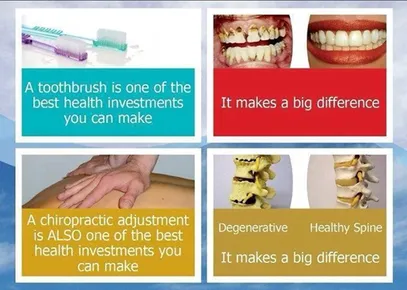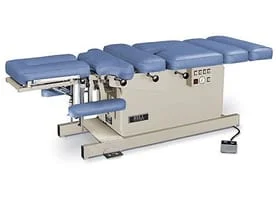An Explanation of Various Current Chiropractic Adjustment Techniques:
The Chiropractic profession is unique in its approach to treating health problems. While medicine has one major approach in treating a health problem, Chiropractic has many different approaches in treating the same problem. Chiropractors focus on dysfunctions that can result from irregularities of spinal and joint structure, or movement. They rely heavily on hands-on procedures to determine structural and functional problems... and they use manipulation to promote normal bodily function in order to assist in correcting or preventing these structural deviations.

The principal procedure used by many chiropractors is a form of spinal vertebral and joint manipulation known as "adjustment" that refers to a variety of manual or mechanical interventions.
Adjustments are applied to spinal and peripheral joints (shoulders, elbows, hands, knees, feet) that are subluxated (not moving properly and/or out of alignment) and help return the joints to their normal position relieving pain, avoiding degeneration, restoring nerve function, strength and allowing the body to begin the natural healing process. There are many different types of adjustments in a chiropractor's repertoire, with new adjusting technique procedures being developed as time goes on. While undergoing an adjustment, it is important that the patient remain relaxed for this generally painless procedure to be most effective.
In general, a chiropractic adjustment is the use of a specific, controlled movement (force) generally painless in a precise direction consisting of a short amplitude and high velocity thrust that moves the joint beyond where patient's muscles could move the joint by themselves, but short of ligament injury. A certain speed of the thrust is employed to ensure that the patient's muscles have no time to contract and so restrict the movement. A "cracking or popping" sound may be heard during the thrust. This is caused by gases in the synovial fluid (the lubricating fluid inside each joint capsule) and is harmless. These gases are flushed away by the circulatory system.
Mobilization, on the other hand, refers to movements administered by the clinician within physiologic joint space in order to increase overall range of motion. Both the manipulation and mobilization procedures help to stretch the joint capsule and surrounding tissues.
Most chiropractors will treat only the joint that they believe is misaligned or subluxated. Some, however, may treat the whole spine which is Dr. Pisarek's philosophy and method of chiropractic care, or concentrate only on one area.
There are many different adjusting techniques in chiropractic. All techniques are effective in treating chiropractic issues depending on how much "expertise" your Chiropractor has in any given technique. Each chiropractor becomes highly skilled in a variety of adjustment procedures that are most suitable for your age, body type and condition. The types of techniques offered by a chiropractic clinic helps to define the type of care you will receive from your Chiropractor. Some clinics offer only one or two different adjusting techniques, while others will offer more. No one clinic provides every technique.
Chiropractors use a myriad of techniques often named after the college they attended or a person that developed the particular method of adjusting. Chiropractic techniques are not to be confused with "diagnostic modalities", which are methods used to analyze your symptoms and diagnose what care or treatment is needed. Some chiropractors utilize other healing techniques such as nutrition, lifestyle advice, acupuncture (laser, electronic, needle-insertion) and registered massage therapies. These therapies are not "chiropractic" but may be used by a chiropractor in treating a patient.
Below, we have attempted to compile a brief description of common techniques widely used today in the chiropractic profession.
At Advanced Healthcare, Dr. Pisarek may use a single technique or a combination of a few techniques when treating his patients. The type of technique utilized is based upon the patient's presenting complaints, symptoms, condition, age, body type, needs and outcomes expected.
Listed alphabetically, the techniques have been divided into 2 groups; those that we administer at Advanced Healthcare, and then the rest:
1 - The following techniques are provided at Advanced Healthcare:
Activator Methods: The 'Activator' mechanical adjusting instrument is a small hand-held, spring-loaded device... designed to produce a quick controlled, light-force impulse to adjust spinal joints without undue strain to the patient. The Activator
chiropractic adjusting technique has been thoroughly researched for over 40 years. The impulse force can be varied and is faster than nerves can react to contract muscles. The speed allows this type of adjustment to be gentle – since there is no chance for the muscle to “flinch” (resist). So, in simple terms, the force necessary to move and adjust the spinal joint is developed by the 'speed' of the instrument's thrust, and not by a high 'force'... and is felt for the most part as a very gentle sensation only. This technique helps to restore proper balance and joint movement... and does it with improved safety and comfort.

Activator is a great technique for the type of patient who does not want to hear the "popping" (cavitation) sound that is typically associated with a hands-on manual adjustment. Activator can be used on any age group, especially pregnant women, on infants when a newborn's spine is still mostly made of softer bone, children to athletes and senior citizens where a typical chiropractic thrust would be contraindicated. The activator instrument is also a very useful tool when we are treating areas around pre-existing fractured ribs. It is a nice option in many situations that chiropractors encounter in practice to help deliver a patient's manipulation that they would not be able to do manually for one reason or another.
Never in the history of chiropractic have we been able to provide the level of help and expertise that now exists. These newer correction methods are even safer, more comfortable and more effective than ever before. Dr. Pisarek has over 40 years of training and experience in painless, corrective spinal and joint adjustment techniques.
Click here for further information on "Activator Method Chiropractic Technique".
- Applied Kinesiology (AK): This technique deals not only with the placement of bones, but also with the muscles that hold them in position. Chiropractors employing AK use special techniques to help balance-opposing muscles attached to a misaligned bone. Light massage is given to various reflexes and sometimes to acupressure points. This restores normal muscle function, in order to allow the adjustments to be more effective.
- Diversified Technique: This technique, also referred to as 'Full-Spine Specific' (see below), is considered the oldest of the chiropractic techniques. It is without question the most widely used non-specific technique in general chiropractic practice today, which may utilize more than one method of spinal vertebral and/or peripheral joint adjustment. Chiropractic students spend their entire education practicing the art of Diversified technique. Through the use of "High Velocity, Low Amplitude (HVLA)" thrusts or gentle mobilization therapy, this technique focuses on the restoration of normal, pain-free bio-mechanical function to the spine and extremities. Contrary to popular belief, Diversified is not a painful technique to administer. As a matter of fact, over 90% of patients polled stated that receiving a diversified adjustment is not painful at all. When pain (usually transient) does exist in a chiropractic adjustment, it is typically due to the fact that there has been a previous trauma to the area being treated causing muscles to be sore. All chiropractic adjustments are designed to relieve pain, not cause pain.
- Extremity Manipulating/Adjusting Technique: As the name implies, this chiropractic procedure focuses on chiropractic adjustments to the extremity (peripheral) joints such as the shoulder, elbow, wrist, hands and fingers, hip, knees, ankle, feet and toes. Here, the most common conditions would include posture-linked problems, carpal tunnel syndrome, and gait (walking).
- Full-Spine Specific (FSS): Similar to diversified; refers to cervical (neck), thoracic (mid-back), and lumbar (low back) adjusting techniques, as opposed to specializing in just the neck, for example. It basically refers to non-specific adjustment of spinal segments (vertebrae).
- Gonstead (Modified): This specific technique, which is a variation of the Diversified technique, utilizes the use of detailed analysis of spinal x-rays to locate spinal mis-alignments prior to delivering a controlled thrust into a joint in a very specific line of drive, to help correct spinal subluxation.It emphasizes five criteria in determining the presence of a Vertebral Subluxation Complex (VSC), which include: visualization, instrumentation, static palpation (feeling), motion palpation, and X-ray analysis.
- Low Force: A nondescript term used to describe any of a number of low force techniques.
- Motion Palpation Analysis: A nondescript term, which may be used in many ways but usually, involves techniques other than chiropractic.
- Nimmo Technique: Application of simple pressure to tender areas to release muscles from localized spasm.
- Orthotics (Computer Generated - FootMaxx): Custom-made devices placed in the shoes to treat many foot and postural mechanical problems such as foot pain, uneven leg length, spinal curvature and tilted pelvis' in order to help assist with stabilizing most foot and spinal/pelvic conditions.
- Sacro-Occipital Technique (SOT - Pelvic Blocking): Chiropractors use pelvic blocking techniques as part of another low back disc protocol. This technique is referred to as 'S.O.T.' which stands for sacro-occipital-technique. Padded blocks are placed under the patient in the pelvic area to allow the body to adjust itself, since muscle tension at the base of the spine and pelvis affects the neck and upper body spinal regions.Under a blocking technique, disc patients are categorized according to a set of findings including traditional orthopedic and neurological testing. Treatments using pelvic blocking techniques include the use of cushioned wedges, which are placed under each side of the pelvis along with gentle maneuvers. This allows gravity and changes in mechanics to draw the disc away from the nerve. Disc injuries are treated in a series of non-force treatments with monitoring and evaluation. If subjective signs and symptoms are not improving, referral for imaging and medical spine specialist referral are standard of care.
- Soft Tissue: Any of a number of massage type techniques, which would involve work on the muscles and ligaments as opposed to the bony articulations of the body. Soft tissue therapy is used in almost every treatment session to address dysfunction of the muscles, tendons, nerves, and ligaments in the area of complaint. It is used along with spinal/extremity adjustments to treat acute strains and sprains as well as chronic overuse conditions such as tennis elbow, carpal tunnel syndrome, plantar fasciitis, low back pain, and headaches.
- Straight: This will involve any of a number of specific adjusting techniques with the addition of a philosophy that emphasizes the role of the "Innate Intelligence" (the internal, life-force organizing properties of living things) of the body in the healing process. It will not utilize any therapy other than hand adjustment.
- Thompson Terminal Point Technique: A specific technique for adjustment of

- Trigger Point Therapy: This is a muscle technique, which utilizes deep pressure at certain locations in the musculoskeletal system where nodules or spasms have developed; this technique will cause relaxation of the muscle.
2 - The following techniques are not offered at Advanced Healthcare:
- Active Release Technique (A.R.T.): ART is a safe, soft tissue system that diagnoses and treats soft tissue injuries, which can be a result of repetitive stress or trauma such as whiplash or from over-use of the same muscle group doing the same activities. When a muscle or tendon is injured, an adhesion (scar tissue) forms between the fibers impairing the oxygen and blood supply to the muscles and nerves establishing a cycle of chronic, recurring pain. It is a non-invasive healing procedure that locates and breaks down scar tissue and adhesions that cause soft-tissue injuries, by applying tension with the practitioner's thumbs to the scar tissue while lengthening (stretching) muscles, tendons and ligaments. ART returns tissue to its correct tension, texture, movement and function thus eliminating symptoms. At times ART can be described as mildly uncomfortable, but the therapeutic benefits easily outweigh any tenderness felt during a treatment. ART is a treatment not only for athletes, but to anyone who leads an active life, sits at a computer all day, or enjoys gardening.
- Bio-Energetic Synchronization Technique (BEST): A non-force technique using subtle, yet precise pressure applied by hand to remove blocked nerve energy, eliminate physiological interference and balance sensory signals to the central nervous system.
- Chiropractic Biophysics (a.k.a. Clinical Bio-Mechanics of Posture - BCP): A highly specific method of x-ray analyses and full spine postural based system, which utilizes "mirror image" instrument adjusting, drop table adjusting, and manual adjusting along with very specific postural-based exercise and traction in order to restore the spinal column and posture back towards normal.
- Cox Flexion/Distraction Technique: This specific chiropractic stretching technique uses hands-on adjustment technique together with a specialized table designed to gently traction (pull/distract/stretch) and slightly flexing the spine in a pumping rhythm. There is no pain involved in the treatment. This technique may be used in the treatment of disc herniations (bulge), the often-accompanying leg pain and to increase the mobility of the spine, by increasing the amount of space in the joints of your spine. Theoretically, the tractioning or distraction of the disc combined with isolation and gentle pumping of the involved area allows the central area of the disc, the nucleus pulposus, to assume its central position in the disc. Flexion-distraction is thought to improve disc height. These actions move the disc away from the nerve, reducing inflammation of the nerve root, and eventually the associated pain and inflammation into the leg. Flexion-distraction is applied in a series of treatments combined with adjunctive physiotherapy, supplementation, and home instructions. Eventually, specific exercises for low back disc conditions are introduced. Patients are evaluated and monitored throughout the treatment program. In flexion-distraction technique, chiropractors follow a "50% rule": if a patient has not improved objectively and subjectively by 50% at the end of 12 sessions, then imaging studies are assigned and spine specialist referral is considered. If there is substantial worsening at any time during treatment, imaging and neurosurgical referral are the standard of care.
- Grostic: A very specific method of x-ray analysis and adjustment of only the upper cervical (neck) spine. Similar to HIO, adjustment is based on the release of pressure on C1 & C2.
- HiO ('Hole-In-One'): An antiquated term used years ago to describe the specific adjustment of the upper cervical (neck) only. Similar to the Toggle Recoil Technique.
- Kale Technique: A specific technique for the adjustment of the Upper Cervical (neck) spine.
- Life Cervical: A specific technique taught at Life Chiropractic College for the upper cervical spine.
- Logan Basic: A non-force technique taught at Logan Chiropractic College, which utilizes a soft steady pressure on ligaments around the tail-bone (sacrum) for release of tension and vertebral misalignments in the lower back. Correcting the sacrum corrects the rest of the spine.
- NUCCA (National Upper Cervical Cervical Chiropractic Association): An association of doctors who specialize in upper neck adjusting. This involves any of a number of chiropractic techniques, which specialize in specific upper cervical adjusting procedures.
- Palmer or Palmer Package: Adjusting procedures taught through one of the Palmer Chiropractic Colleges in the USA; includes Diversified, Gonstead, Toggle Recoil, and others.
- Pettibon: Probably the first instrument technique established for the adjustment of the upper cervical spine. It utilizes specific X-Ray analysis and very specific instrument alignment and adjustment.
- Pierce-Stillwagon: A technique very similar to the Thompson technique utilizing the Thompson adjusting table, but also using X-Ray and Thermographic (Infra-red computerized temperature) analysis.
- Side Posture: A special adjusting table technique for specific adjustment of the upper cervical spine. Position of the patient is on their right or left side; many techniques use this position to make an adjustment.
- Toftness: A technique, which utilizes a special instrument for analysis of the spine by measuring electrical impulses on the nerves. Adjustments are specific on those areas where a short circuit is found on the nerves.
- Toggle Recoil: A specific technique for the adjustment of the upper cervical spine. This term has replaced the term HIO, previously mentioned in this article.This technique usually utilizes a side posture table with a cervical headpiece, which makes a slight drop when the adjustment is given.
- Trigenics: This is a neurologically-based technique of manual joint and soft tissue manipulation to lengthen and strengthen muscles at the cellular level, using specific points in the soft tissue to stimulate the nervous system.It is a safe, non-forceful and pain-free treatment for acute or chronic musculoskeletal pain or injury that allows for deeper treatment earlier in the rehabilitative process for all age groups.
- Upper Cervical Technique: Any of a number of techniques for the specific adjustment of the upper cervical spine (the upper part of the neck, closest to the brain).
References:
- The American Chiropractic Association: Facts & Statistics about Chiropractic.
- Unsworth A, Dowson D, Wright V. "Cracking Joints".

